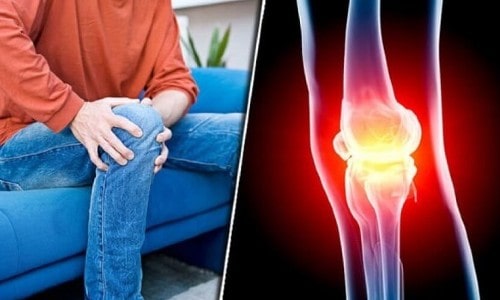Seven symptoms of arthritis in the knee
Seven symptoms of arthritis in the knee

Arthritis in the knee can be excruciating, uncomfortable, and cumbersome, with swelling and stiffness making it even more challenging to move around. And the symptoms that may eventually cause severe disability for many typically worsen over time.
Knee arthritis makes it very difficult to do everyday activities and chores like walking, running, or climbing stairs. Even though there is no cure for arthritis, many options help manage the pain.
Arthritis in the knee is of two types – Osteoarthritis and Rheumatoid arthritis. It is a progressive condition that appears when the cartilage in the knee joint wears off with age. There are a few symptoms by which you can recognize the situation and get treatment accordingly.
- Cracking sounds: Sounds of cracking and popping, known as crepitus, are usually considered an onset of arthritis in the knee. These occur when the knee begins to lose its cartilage which helps in the smooth functioning of the joint. So, when the cartilage gets damaged, it develops bone spurs making the irregular areas rub against each other.
- Buckling and locking: Over time, knee structure gets damaged and unstable to the tendons, which join the muscles to the bone. Since the cartilage erodes, the bones begin to rub together, causing them to lock up and buckle.
- Increase in pain: Arthritis pain usually begins slowly and increases gradually. The knees start to hurt as you walk, climb stairs, jog, and stand up after sitting or standing for a long time. Symptoms worsen over time and aggravate, especially during cold weather, stress and anxiety, and excess physical activity.
- Swelling and inflammation: Many times, arthritis also causes inflammation and tenderness in the knee because of the collection of extra fluid around the joint. It is common to have fever and tiredness, along with swelling.
- Knee deformity: As the disease progresses, knees begin to deform gradually. Swelling, redness, and pain during the flare also permanently damage the cartilage and tendons. As the muscles weaken, the appearance becomes a deformity when the knees bend outward. Gradually the deformation spreads to the legs as well.
- Restricted motion: With the increase in the intensity of arthritis, it becomes harder to move smoothly. There is a problem with walking, standing, or carrying out daily activities and movements. With time, you will have to take the support of a cane or wheelchair to move around.
- Cartilage damage: This can be detected through x-ray as the cartilage that usually occupies a good space around the joint begins to dwindle with time, causing a lot of hollow space.
Knee arthritis can affect people of all ages. It’s painful, impairs movement, and causes swelling of the joint. Some people are so disabled by it that they can’t work anymore. Others can only work after surgery. Meanwhile, the pain isn’t necessarily as bad for others, but it prevents them from regular activities like cleaning, gardening, and running after their kids.
Arthritis of the knee can decrease your quality of life. The good news is that treatments can lessen the severity of your symptoms. The pain and swelling might not be as bad.
Consult Dr.Nataraj H M, an Orthopedic doctor, and the Best Shoulder Specialist in Bangalore, for evaluation and treatment if you have symptoms.


